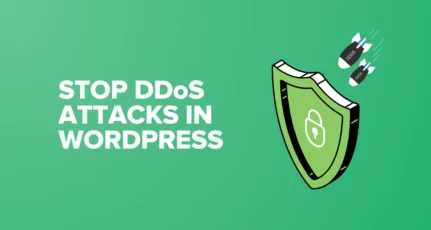
You might have heard that guest posting is dying. Well, that’s a little bit true. But it’s also one of the best and most profitable ways to get high-quality backlinks from high-quality sites.
Here at ShoutMeLoud, I’ve been running a multi-author WordPress blog for 8 years, and more than 700 bloggers have guest posted here.
I have definitely lowered down the number of guest posts that get published in recent days, but I still accept guest posts from users who have a good reputation, or people who can submit something which adds value to the community.
Anyway, this article is about helping you set up your blog for accepting guest posts.
So let’s jump in!
Many bloggers have enabled guest posting on their blog via email, but when you are using WordPress, you can automate the process in a much simpler way. To make the most out of guest posting opportunities, you should enable guest post submission via the WordPress dashboard.
In this article, I will be sharing some of the plugins and settings that I have used to create my multi-author WordPress blog, and you can follow this guide to enable guest post submissions from your WordPress dashboard.
For an overview on guest posting, take a look at:
How To Enable Guest Post Submissions in WordPress from the Dashboard
The very first thing you need to do is enable registration in WordPress.
Most of the blogs that allow guest posting are using default permissions. This means that subscribers and guest bloggers have to email the admin to upgrade their account. From my perspective, this is time-consuming, and when you are in the mood to do a guest post, it acts as a road block.
So, it’s better if you give default permissions as a “Contributor”. (If you’re worried about spam, keep reading…)
Enable WordPress Registration

Log in to your WordPress dashboard:
- Go to Settings > General > Enable user registration > Membership and click the box “Anyone can register”.
- Set the “New User Default Role” as “Contributor”.
So now that we have taken care of the basics, let’s move on…
AccessPress Anonymous Post Pro Plugin

I discovered this plugin a couple of years ago, and while I haven’t used it extensively myself, it looks to be a complete solution for bloggers to accept paid and/or free guest posts.
With this plugin, you can let others submit guest posts directly from the dashboard or from a front-end submission form. I haven’t gotten a chance to explore this plugin in detail, but looking at sales and reviews from existing buyers, this plugin looks pretty solid and you should definitely try it out.
Let me know if you have used this plugin in the comments section. I’d love to hear your review!
Check out the AccessPress Anonymous Post Pro demo here
WangGuard: Stop Guest Post Spam

The major reason most bloggers don’t allow the default registration level as “Contributor” is because they are trying to stop guest post spam.
Spammers use automated software to register on WordPress and send out submissions. On any particular day, I used to see 100+ spam submissions, and it was a headache to delete all of those posts and users one by one.
Now, deleting a user doesn’t help here, as they can always register again and repeat the process, but I can prevent these kinds of submissions from getting to me in the first place.
WordPress Notification Plugin: Enable “Submit for review”
Now, here is a very useful plugin.
It’s called Peter’s Collaboration E-mails.
It notifies the admin whenever a post is submitted for review. Users with contributor rights get a “Submit for review” option, and once they are done drafting their guest post, users can submit their posts for an editorial review.
If an admin accepts or rejects a post, the user will get a notification. This helps a lot in automating the process of notifying the admin and the contributing author about the status of the guest post.
It’s an extremely useful plugin that I heavily rely upon.
Check out Peter’s Collaboration E-mails
WordPress Interaction Plugin: Enable Post Notes
Here is another useful plugin from the same author, “Peter”.
The Peter’s Post Notes plugin adds a “Notes” column in the post editor sidebar.
This is useful if an author wants to add a sidenote about their submission for the editor or admin. As an admin, if you are rejecting a post, you can quickly add the reason why it’s being rejected, or you can request a modification to be made to the author.
Simply add your note and change the status of the article to “Draft” and update it. The guest poster will get an email along with the notes you’ve added.
It’s a simple, but very useful plugin.
Other Things
These are a few of the plugins which I use all the time, and they work like a charm.
There are many more things which you can do to make it nicer for your guest posters like offering a custom WordPress login page or login box on your blog’s sidebar.
You can also:
- Create a landing page for contributor information- like this one.
- Add an author’s box below the post to make sure users know who the author of the post is.
- Add an author’s archive page so that readers can see all posts by any author.
And finally, avoid turning your guest blog into an article directory.
Create a Multi-Author WordPress Blog
These are some simple tips which you can follow to create a multi-author WordPress blog.
Now it’s up to you what extra incentives you want to offer your readers which will make them want to guest post on your website.
If you run a multi-authored WordPress blog where people can submit posts from the WordPress dashboard, I would love to learn a new tip from you. Do share it via the comments.
Like this post? Don’t forget to share it!
Also read:
- Best WordPress Plugins – For Blogs & Business Websites
- How To Change WordPress Admin Login URL For Improved Security






Hello Harsh, A good list of plugins to create multi author blog. I have one small question. Is there any plugin by which I can only give draft option to the Guest Blogger. I dont want to give the publish option. I will publish it on my own. Is there any plugin?
Thanks for such a nice list of plugin. I will also try them.
@Nayan
Yes, you can do that with Role Manager plugin. Give contributor rights to people who register on your blog & with Role Editor plugin; you can give image upload option to “Contributor role”. From here, your guest author can write the post, add images & once they are done, they can hit the button which would submit post for review.
You should also use plugin listed above to get email notification when a post is submitted for review. Only you or anyone with editor rights can publish the post. Feel free to reach out further queries.
Hello Harsh,
I will try to explain what I actually want. I created two other Contributors to my blog. When I publish new articles written by them, their Bio appear below their post by default I think. Is there a way I could have my Bio displayed on ALL post irrespective of the author who wrote such article. I like to have something like this
New post title(at the beginning of the article): New Post
By “Contributor Name”
Other Contributor details
Content content
Content content
Content content
Content content
(After the article)
Author Bio would still be mine (Admin)
Wow Harsh ,
Great Thanks To You ,
Finally I Had Created A Multi Author Blog .
Thanks For sharing
Hi, the recommended main plugin looked great, but now appears to be “abandonware” with no support provided. Any chance of updated version of article for 2015? Thanks!
Hi Harsh,
Thanks for the details plugin description. I have just booked a domain and planning to create a guest blogging platform.
Can you suggest a good wordpress theme ?
Hello Harsh , I need your help. I want to creat an article directory only for indians with wordpress. So , does hostgator baby shared hosting plan can handle unlimited contributors in my blog ?
Well! I don’t use any plugin for Author Details, I’m already having Genesis which gives me the inbuilt option to add author box below post which is relatively good but not fantastic. If I can disable that feature and install new plugin described by you?
This one I would like to know since I am only using Yoast.
Hi Harsh. I would like to know how you can add guest author bio below the guest post and how we can edit it.
Shailendra, do you mean the author box?
Fabulous tips and will definitely be using these plugin’s however one question… is there a plugin for multiauthor bio boxes or a contributor bio box? I’m searching yet I haven’t found yet.
Nice list of plugins. I am also planning to start Guest post on my blogs, so these plugins would surely help me a lot
I have been looking for this article and thanks for covering everything related to guest blog setup. Plugins mentioned are really handy and helps to fight with SPAM. Thank You.
Nice to know about Wang plugin but I am a little wary of enabling the guest posting as of now since the blog is in a nascent stage. When do you think would be a good idea to enable guest posting, because you do need guests to post 🙂
Thanks Harsh for a nice post.
I’ve reviewed 2 Guest Blogging plugins on SML over here – https://www.shoutmeloud.com/most-useful-wordpress-guest-blogging-plugins.html
Thanks for this post Harsh, I am planning to do the same thing on my blog site.
Thanks for sharing the plugins for multi author blogs. I didn’t knew those plugins which you mentioned. Well after reading this post, i come to knew the importance of guest posting as well as better way of integrating it in wordpress blog.
Really useful and informative guide on creating a multi-author blog. WangGuard and Author advertising plugins seems to very useful and hopefully I will be using them on my blog. Thanks Harsh for this wonderful post
Thank you harsh for posting this detailed guide at much need time. I was exploring guest post option for my travel blog and you have given a complete how to guide. Now its become really easy to get through it and Implement it to see it in action. Thanks again.
Ref: Author advertising plugin
This plugin hasn’t been updated in over 2 years. You will surly expect it to have alot of issues. Do you suggest another solution?
Expect a reply from you.
Cheers!
This post came at just the right time because this is something I would like to implement on one of my sites. One thing that is still a concern for me is security on my site?